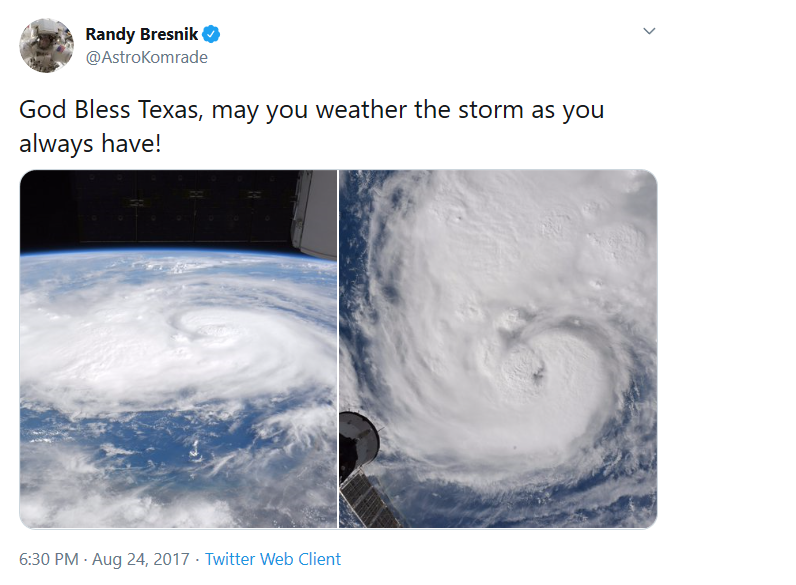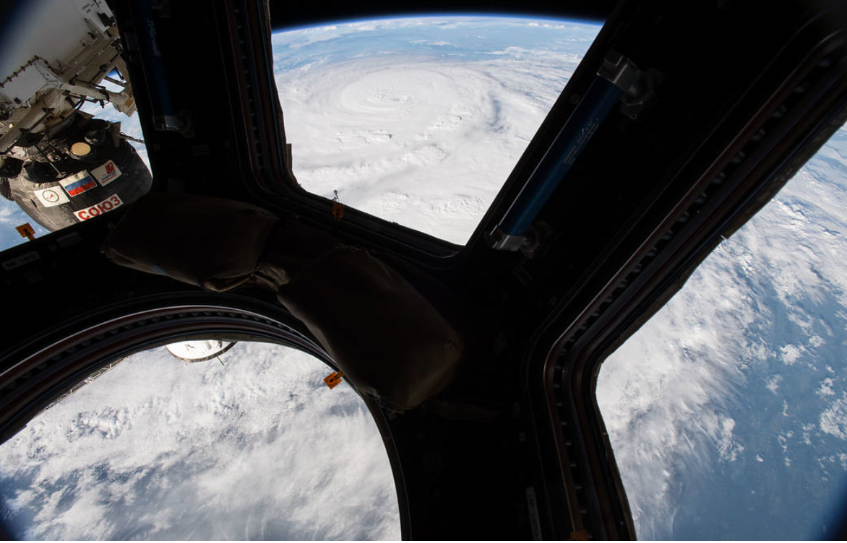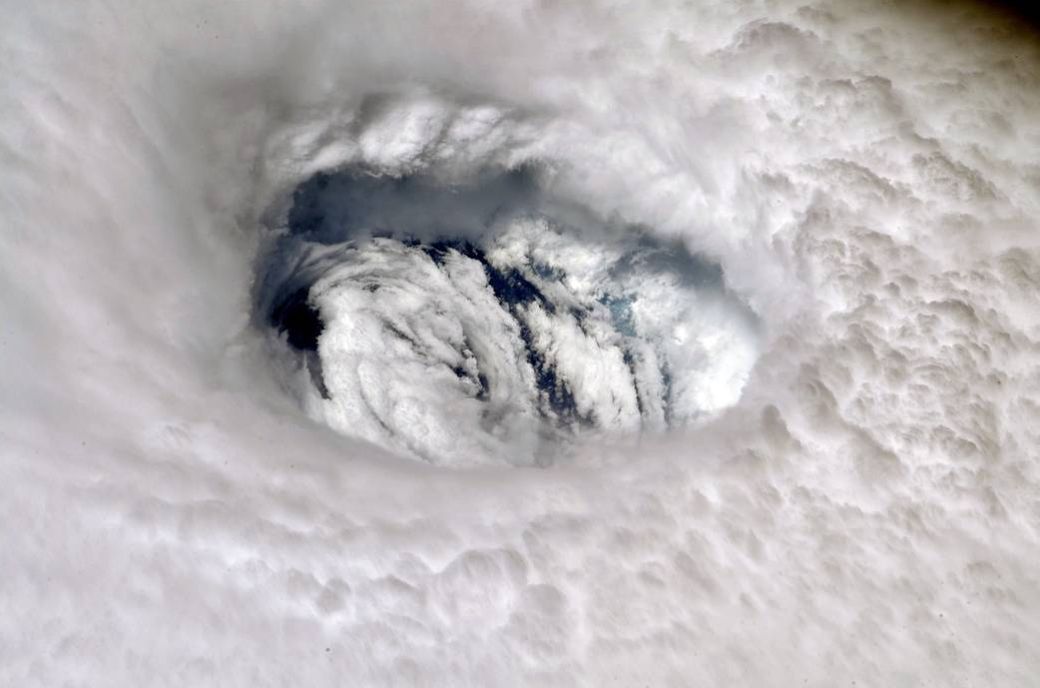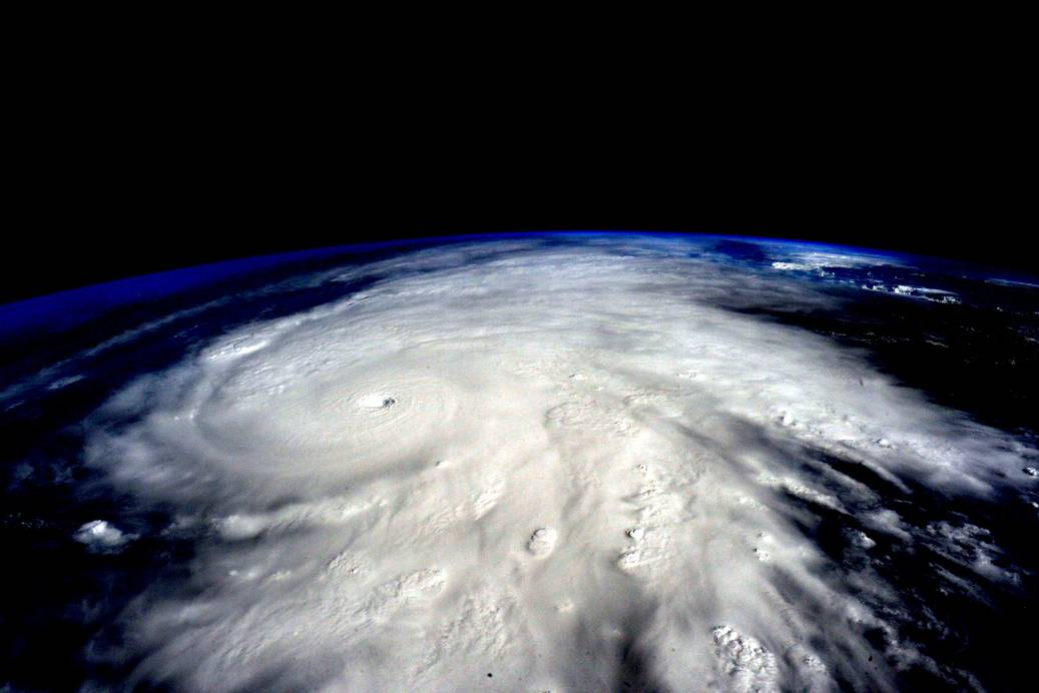Hurricane Season in the Hybrid Environment: What to Know
This year’s hurricane preparedness comes at a time when many employees have returned to full-time work on-site and others are still in a remote, or hybrid, work environment. Either way, it’s important to be prepared for the season … wherever you find yourself.

Center Storm Level Refresher
Center hurricane levels are used to coordinate the preparation of facilities at NASA’s Johnson Space Center at a high level in advance of a storm. Changing the levels is at the discretion of center management.
The levels are:
- Level 5 – Readiness: At the beginning of hurricane season, we begin monitoring tropical weather
- Level 4 – Concern: If there is a storm that may impact Johnson, we begin general preparation of the center
- Level 3- Preparation: When impacts to Johnson become well defined, we start more specific preparations and plan for greater impacts
- Level 2 - Center closure and rideout
- Level 1 - Impact and recovery
Early preparation:
- Prepare early to ensure you are ready for any storm.
- Update your personal contact information so you can stay informed during emergencies. (You should only change your personal information on the page, not your NASA information.)
- Purchase hurricane supplies and materials prior to a storm forming.
- Have a plan in place for evacuation or sheltering in place.
- Have a “grab-and-go” box ready in case you need to evacuate quickly.
- If you have your Johnson laptop or other government equipment at home; be ready to take measures to safeguard it during a storm.

On Aug. 25, 2017, NASA astronaut Jack Fischer photographed Hurricane Harvey from the cupola module aboard the International Space Station as it intensified on its way toward the Texas coast. Credits: NASA
Center status before, during, and after a storm:
Center management monitors tropical storms and hurricane information provided by the National Hurricane Center.
Employees should check JSC SOS for center status and the latest information on any storms that could affect Johnson. You can also call 1-877-283-1947.
Use of leave before, during, and after a storm:
- Your safety is the first priority.
- Contractors should talk to their supervisors for their company’s policy.
- While Johnson is open for normal business, you are encouraged to work with your supervisor for unscheduled annual leave (formerly known as liberal leave) for civil servants before, during, and after a storm period.
- Civil servants who believe they need time off well in advance of storm arrival or evacuation orders may request a flex day, leave, or adjust their schedule to prepare for severe weather. Buying materials early in preparation of the season can help reduce need for leave.
- On-site workers are encouraged to take home any materials that will enable telework should weather conditions prevent physical access to the center.
- Civil servants on a telework or remote work agreement are expected to telework if the center partially or fully closes and while weather impacts do not interfere with an employee’s ability to telework safely, per agency continuity of operations guidance.
- Supervisors will advise those employees who are specifically required to continue on-site critical work. These employees should discuss an alternate work strategy with their manager in case it is unsafe to travel to the center.
- When weather conditions and local evacuation status warrant, your supervisor may use their discretion to issue Weather and Safety Leave (XLV61) to civil servants. Supervisors may grant weather and safety leave to employees who are unable to work safely at their telework/remote work site due to weather or safety conditions caused by an emergency situation (e.g., need to take shelter, power loss, residence becomes unsafe, you’ve been encouraged or directed to evacuate, and/or you lose internet and there is no other work that can be performed).
- Please work with your supervisor to do what you need to do to take care of yourself and your family.
- WebTADS instructions will be provided during or after a storm should severe weather impact the Johnson area so that actual conditions and impact of the storm may be considered. JSC Supervisory Instructions, Weather and Safety Leave reference Guide, and Agency FAQs are available.
- If you need to evacuate, you are responsible for preparing to telework while evacuated by taking your laptop and/or non-sensitive work materials. Discuss with your supervisor if it is not safe or possible to perform work.
- The center will monitor storms and issue clarifying guidance for timekeeping related to pending storms, closures, and/or excused leave if emergency circumstances warrant.

Example showing how an employee should update their personal contact information at id.nasa.gov.

Astronaut Nick Hague, aboard station, posted this photograph of Hurricane Dorian to Twitter on Sept. 2, 2019. He added, “You can feel the power of the storm when you stare into its eye from above. Stay safe everyone!” Credits: NASA
Roundup talked to both Johnson’s director of Center Operations, Joel Walker, and Linda Spuler, emergency manager, to get additional insight into how the center, and the rest of us, personally, should prepare for the hurricane season (this one with a waning pandemic, to boot). Here’s what they had to say.
Q: In the event of a hurricane in the Houston area, how does the center respond?
Joel Walker: We have a Center Operations rideout team that stays at the center if we close due to a hurricane. That team is responsible for overseeing the safe operation of our site-wide utility systems and monitoring of the storm’s impact. They transition to a different recovery team soon after the storm passes.
Q: How are essential operations that cannot be accomplished by telework impacted by severe storms?
Joel Walker: We have a well-planned preparedness and shutdown plan that we have used in the past, and we practice it each year. That includes a complete shutdown and evacuation of even the rideout team if a storm reaches the most severe levels. So, what we can accomplish through teleworking, and what we have to do as essential on-site work now, will not really be as impacted as you might think. The plan considers not being able to do essential work on-site.
Q: If there are impacts to the center, how will employees be notified?
Linda Spuler: Johnson uses the agency Emergency Notification System (ENS) to notify employees of emergencies. Employees should take the time to add or correct their contact information at id.nasa.gov to ensure they can receive messages to personal cell numbers and home email addresses. Be sure to click on the “Edit” button in the “Personal” section of id.nasa.gov to edit information. DO NOT attempt to change information in the names/email block (see the example below). Note: Civil Servants will be rerouted to Employee Express, where they will need to change their emergency contact information in the “Miscellaneous” section. Johnson also uses the externally accessible emergency management website, jscsos.com, to post center status and other information for employees.
Q: What’s the best way employees can personally prepare for hurricane season?
Linda Spuler: Make a plan. Take time now to decide what you will do if a storm threatens our area. Keep in mind that the availability of vaccines and increased travel has changed the availability in hotels and shelters, but there may be COVID-19 protocols and guidelines you will have to follow if you evacuate. The CDC (Centers for Disease Control and Prevention) has guidelines on how to keep yourself safe in a shelter.
Q: Are there items that we should have on hand, at home, if we must prepare quickly for a hurricane?
Linda Spuler: Sufficient water and non-perishable food items are a must. Plan for a gallon of water per person (and each pet!) per day. Most guidance says to prepare for at least 72 hours without power, so make sure you have plenty of batteries. You should keep a supply stock handy — even if you plan to evacuate. Hand sanitizer, soap, and masks are things you should keep on hand whether you stay or go, but consider that you may be without running water if a storm hits our area. Storms are unpredictable, and you may find yourself trapped at home. Keep important documents like birth certificates, passports, legal paperwork, and insurance policies handy, and remember to take them with you if you evacuate.
Q: What should be included in a personal hurricane plan?
Linda Spuler: You can find out more about creating your own emergency plan under the “Make a Plan” menu item at https://www.ready.gov/hurricanes. You can find suggestions about what to include in your kit here. There is also quite a bit of information on the internet about building an emergency kit in a five-gallon bucket, which would be a handy way to prepare a “go kit” for your car if you plan to evacuate; http://fivegallonideas.com/emergency-kit/ offers some good ideas.
Keep in mind that recent supply shortages in all sectors may make it harder to get what you need, and it may influence your decision to evacuate. There are many factors for you to consider. For example, you may think it is safer to stay home, but have you considered that you may lose running water at your house? The CDC has put together information on how the pandemic may impact your plan.
Q: What is the best route to have a discussion if an employee feels unsafe driving because of a storm?
Joel Walker: We do not direct employees on what they should do personally for each storm. We will provide the latest information we receive, and our JSC SOS site has links to lots of other agency and community resources for evacuation routes and immediate, current storm conditions. Each employee should have a plan on what they will personally do for their family in case of a storm. Since an individual response is dependent on personal situations, and storm conditions can change rapidly, we encourage employees to follow guidance by local municipalities and monitor news and other information resources when making their own personal decisions.
So, in a nutshell …
People > property. Plan what you will do for your family and home in the event of a storm.
Your level of anxiety, from the time a storm is named in the Gulf of Mexico, is proportionally related to how much you did in advance to prepare for it. The good news, though, is that it’s all in your power: from updating your information to coming up with a plan for your family to extra contingencies related to evacuations … Take the initiative now so you will find yourself prepared regardless of where you are working.
Helpful Links:

Astronaut Scott Kelly posted this photo of the Hurricane Patricia taken from the International Space Station to Twitter on Oct. 23, 2015, with the caption, “Hurricane #Patricia approaches #Mexico. It's massive. Be careful! #YearInSpace!” Credits: NASA








